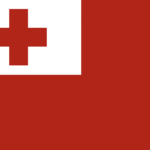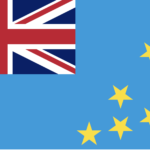Originally published at: Most Obese Countries in the World in 2023 | GoVisaFree
- 10 Most Obese Countries
- United States
- Kuwait
- Federated States of Micronesia
- Kiribati
- Samoa
- Tonga
- Tuvalu
- Marshall Islands
- Palau
- Nauru
- Factors That Contribute to High Obesity Rates in a Country
- 10 Least Obese Countries in the World
- Most Obese Countries in the World: The Wrap-Up
- Related Articles
- FAQs
- 50 Most Obese Countries in the World
In a world where fast food joints and sedentary lifestyles have become the norm, the global obesity epidemic continues to escalate at an alarming rate. While obesity is a universal problem, certain countries have been hit harder by it than others. This article takes a closer look at the most obese countries in the world and explores the underlying factors contributing to their weighty predicament.
As we delve deeper into the data, we find that obesity is not solely a result of individual choices but rather a complex interplay of social, economic, and cultural factors. High rates of poverty, limited access to fresh produce, and a lack of education on nutrition all contribute to the problem. Furthermore, sedentary lifestyles and a lack of physical activity have become commonplace in many of these countries.
So, which countries top the list for obesity rates? What are the factors that carry them to the top of the list? And what are they doing to combat this growing problem? Join us on this journey as we unravel the complexities of this global health crisis.
10 Most Obese Countries
The rise of obesity has become a critical issue that cannot be ignored, with statistics showing that over the past four decades, the prevalence of overweight adults has skyrocketed. More than 1.9 billion people are now classified as overweight, and a staggering 650 million of them are categorized as obese.
The worldwide average obesity prevalence stands at approximately 13%, with a global median body mass index (BMI) of 24.1. The health implications of obesity are concerning, as it increases the likelihood of developing chronic illnesses like heart disease, stroke, and diabetes.
Find below a list of the ten most obese countries in the world; and don’t forget to scroll down until the end of the article to see the top 50.

 United States
United States
The United States, known for its fast-paced lifestyle and high-calorie food, ranks as the 10th most obese country in the world.
The obesity rates in the US have been on a steady rise for decades, with almost 35,5% of men, 37% of women, and 41,8% of children being classified as obese. The reasons for this alarming trend are complex and multifactorial, including a lack of physical activity, sedentary jobs, and an abundance of processed foods high in fat, sugar, and salt. Additionally, social and economic factors, such as poverty and food insecurity, play a considerable role in obesity rates.
To combat this health crisis, the US government has implemented various measures, including public health campaigns promoting physical activity and healthy eating, food labeling requirements, and regulations on school lunches. Healthcare providers are also encouraged to counsel patients on weight management, and insurance companies are increasingly covering obesity treatment options.

 Kuwait
Kuwait
Kuwait, a small country in the Middle East, is ranked as the 9th most obese country in the world.
Kuwait’s obesity rates have soared in recent years, with over 45,6% of women, 33.3%
of men and 42,4% of children being classified as overweight or obese. The primary reasons for this trend include sedentary lifestyles, lack of physical activity, and a diet rich in sugar and unhealthy fats. Other factors like large portions and traditional foods have contributed to the country’s high obesity rates.
The Kuwaiti government has implemented various measures to encourage healthy lifestyles and combat obesity. The government has launched campaigns to raise awareness about the risks of obesity and promote healthy eating habits. Regulations have also been put in place to promote physical activity, such as building more parks and public spaces. Furthermore, schools have been encouraged to provide healthier meal options for students, and the government has implemented a special tax on sugary drinks.

 Federated States of Micronesia
Federated States of Micronesia
The Federated States of Micronesia, a small island nation in the Pacific, is ranked as the 8th most obese country in the world.
Micronesia’s obesity rates are staggering, with almost 50% of the population classified as obese or overweight. The primary reasons for this trend include a shift towards a Westernized diet, lack of physical activity, and genetic factors.
To address this issue, the Micronesian government has implemented various measures to combat obesity and promote healthy lifestyles. The government has launched campaigns to raise awareness about the risks of obesity and promote physical activity, particularly among children. Additionally, schools have been encouraged to provide healthier meal options for students, and the government has implemented taxes on sugary drinks and junk food.
Given the unique cultural and geographical factors at play, solutions that are tailored to the needs of the population are needed to effectively combat this epidemic.

 Kiribati
Kiribati
Kiribati, an island nation located in the central Pacific Ocean, is the 7th most obese country in the world.
With 46% of the population classified as obese, Kiribati faces a growing health crisis. The reasons behind the high rates of obesity in Kiribati are complex, including factors such as traditional diets being replaced by processed foods, limited access to physical activity opportunities, and a lack of healthcare services contributing to the issue.
To address the problem of obesity, the Kiribati government has implemented various measures to promote healthy lifestyles, including launching awareness campaigns, increasing access to fresh produce, and encouraging physical activity. The government has also partnered with international organizations to develop and implement nutrition education programs in schools.
Despite these efforts, the obesity epidemic in Kiribati remains a pressing concern. Innovative solutions that take into account the unique cultural, social, and economic factors at play are needed to effectively address this growing problem and improve the health of the population.

 Samoa
Samoa
Samoa is a small island nation situated in the South Pacific that faces a grave challenge as it holds the unfortunate title of being the sixth most obese country in the world.
Roughly 47% of the Samoan population is categorized as obese or overweight, and the issue seems to arise from a combination of factors, including an escalating dependence on Westernized diets, sedentary lifestyles, and limited healthcare accessibility.
To address the obesity crisis, the Samoan government has launched various initiatives that promote healthy living, including campaigns that promote physical activity and nutrition education programs. International organizations have also joined forces with the government to deal with the growing concern of childhood obesity.
Despite these efforts, obesity in Samoa remains a significant challenge. Dealing with the problem will require a comprehensive approach that takes into account the cultural, social, and economic factors specific to Samoa. By investing in education, infrastructure, and preventative healthcare, Samoa can work towards a healthier future for its population.

 Tonga
Tonga
Tonga is a small Polynesian country located in the South Pacific, with a population of just over 100,000 people.
Despite its size, it ranks as the fifth most obese country in the world, with almost 50% of its population classified as obese or overweight. The high rates of obesity in Tonga can be attributed to a wide range of factors, including the prevalence of high-calorie, processed foods, a shift towards more sedentary lifestyles, and a lack of awareness about healthy lifestyle choices.
The Tongan government has implemented a number of measures in recent years to combat the obesity epidemic, including campaigns to encourage healthier eating habits and regular physical activity. The government has also introduced policies to reduce the importation and availability of unhealthy food and beverages in the country. Furthermore, community-led initiatives have been developed to promote healthy eating and physical activity, and community gardens and sports programs were established as part of the effort.

 Tuvalu
Tuvalu
Tuvalu, a small island nation in the Pacific, has been ranked as the fourth most obese country in the world, with a staggering 51,6% of its population being classified as obese or overweight.
The leading cause of Tuvalu’s high obesity rate is its limited access to healthy and nutritious food options. Tuvalu, being a remote island nation, has to import most of its food, making healthy food options more expensive and less accessible for the general population.
Moreover, the country’s traditional diet, which was once rich in fresh fish and vegetables, has shifted to processed foods with high levels of salt, sugar, and fat due to the influence of Western culture. This shift has resulted in an increase in non-communicable diseases such as diabetes, heart disease, and hypertension.
The government of Tuvalu has recognized the issue and has taken measures such as implementing nutrition education programs, promoting local agriculture, and reducing imports of unhealthy food options.

 Marshall Islands
Marshall Islands
The Marshall Islands is the third most obese country in the world, with as significant a portion of its population as 52.9% being overweight or obese.
The obesity issue in the Marshall Islands is mainly attributed to the availability of unhealthy food choices, limited physical activity, and cultural beliefs that prioritize larger body sizes. The traditional Marshallese diet, which was once primarily based on fresh fish and vegetables, has been replaced with imported, high-calorie foods that are more affordable but less nutritious.
The Marshall Islands government has made efforts to address the obesity epidemic by promoting healthy eating habits and an active lifestyle. Education campaigns have been launched to encourage healthier food choices, and there have been efforts to increase access to fresh produce and seafood. The government has also implemented programs to increase physical activity, such as constructing walking paths and encouraging sports participation. However, more work is still needed to combat this issue and promote a healthier lifestyle for the people of the Marshall Islands.

 Palau
Palau
Palau, a tiny island nation in the western Pacific Ocean, has been listed as the second most obese country in the world.
The obesity rate in Palau is 55.3%, which is dramatically high. The alarming rise in obesity rates is largely due to a shift from traditional diets to processed and imported foods, along with sedentary lifestyles and limited access to affordable and healthy food options. Palau’s unique geographic and economic circumstances have presented significant challenges to addressing the issue of obesity.
Despite the challenges, the government has taken measures to encourage healthier lifestyles and diets, including initiatives to promote physical activity and healthy eating habits in schools, workplaces, and communities. Efforts have also been made to increase the availability and affordability of fresh produce and healthy foods through community gardens and farmer’s markets. Furthermore, local organizations have been partnering with healthcare providers to offer counseling, nutrition education, and fitness programs to help individuals manage their weight and prevent obesity-related health problems.
While the progress has been slow, Palau’s government and its people remain committed to tackling the obesity epidemic and improving the health of their nation.

 Nauru
Nauru
Nauru, the smallest island nation in the world, is also known as the most obese country globally, with an alarming obesity rate of 61%.
The primary reason behind the obesity issue in Nauru is the shift from a traditional subsistence-based diet to an imported, high-calorie Western-style diet, which is cheaper and readily available due to globalization. In addition to the diet shift, the increasing use of cars and sedentary lifestyles, combined with a lack of awareness about healthy eating habits, have resulted in a surge of health-related issues.
To combat the problem, Nauru has taken several measures, such as implementing a sugar tax and promoting the consumption of fresh fruits and vegetables through various initiatives. The government has also emphasized the importance of physical activity and encouraged its citizens to lead an active lifestyle.
Despite the efforts, the obesity rate remains high, indicating the need for more extensive interventions, such as promoting sustainable agriculture and increasing public awareness of healthy living.
Factors That Contribute to High Obesity Rates in a Country
- Dietary habits: The types of food and drinks consumed by people in a country, including their portion sizes and consumption frequency, can have a significant impact on obesity rates. Diets high in calories, sugar, and unhealthy fats can increase the risk of obesity.
- Physical activity: Sedentary lifestyles, lack of exercise, and limited access to physical activity facilities and infrastructure can also contribute to higher obesity rates.
- Socioeconomic factors: Income, education, and social status can all impact obesity rates. People with lower incomes and less education often have less access to healthy foods and opportunities for physical activity.
- Cultural factors: Cultural attitudes towards food and body image can also influence obesity rates. In some cultures, larger body sizes may be seen as a sign of health and prosperity.
- Genetics: While genetics do not directly cause obesity, they can make certain individuals more susceptible to weight gain and obesity.
- Environmental factors: Pollution, stress, and other environmental factors can also contribute to obesity rates by disrupting hormonal and metabolic processes.
10 Least Obese Countries in the World
Country |
Obesity rate |
Overweight rate |
Male obesity rate |
Female obesity rate |
|
1 |
Bangladesh |
3.6% |
2.3% |
5% |
9% |
2 |
East Timor |
3.8% |
2.6% |
4.9% |
12.5% |
3 |
India |
3.9% |
2.7% |
5.1% |
6.8% |
4 |
Cambodia |
3.9% |
2.7% |
4.8% |
11.3% |
5 |
Nepal |
4.1% |
2.7% |
5.4% |
7.5% |
6 |
Japan |
4.3% |
4.8% |
3.7% |
14.2% |
7 |
Ethiopia |
4.5% |
1.9% |
6.9% |
8.6% |
8 |
South Korea |
4.7% |
4.4% |
4.8% |
26.9% |
9 |
Eritrea |
5% |
2% |
7.6% |
10.8% |
10 |
Sri Lanka |
5.2% |
2.9% |
7.3% |
12.9% |
Most Obese Countries in the World: The Wrap-Up
In conclusion, the prevalence of obesity continues to rise in many countries around the globe, with Nauru ranking as the most obese country. The alarming rates of obesity in these countries are attributed to various factors such as sedentary lifestyles, unhealthy diets, and limited access to healthcare. While many of these countries have taken measures to address the problem, such as promoting physical activity and healthy eating, there is still a long way to go in the fight against obesity.
It is crucial to recognize that obesity is not just an individual problem but a societal issue that requires a collective effort to address. Governments, healthcare professionals, educators, and individuals all have a role to play in promoting healthy lifestyles and preventing obesity. By working together, we can create a world where healthy living is the norm and obesity is no longer a leading cause of preventable deaths. Let us strive to make that a reality.